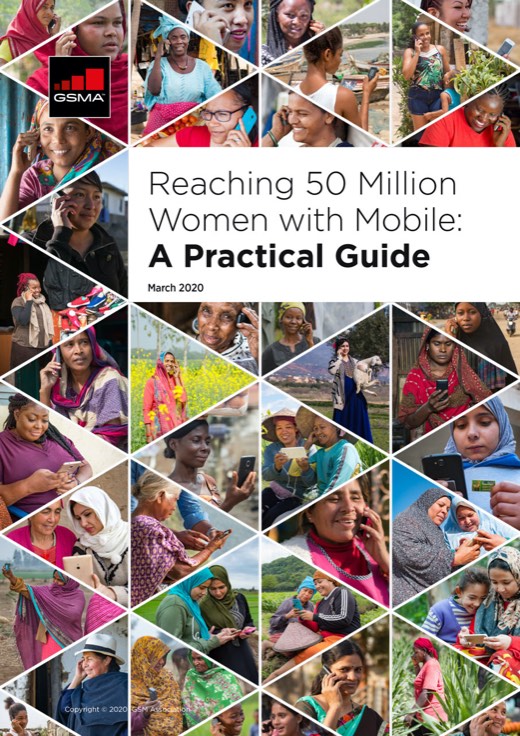Top 10 recommendations for reaching women with mobile across low- and middle-income countries
Drawing on our research and work with operators and other partners across Africa, Asia and Latin America over the last decade, we have distilled 10 key recommendations for reaching women with mobile.
While our recommendations are based on our experience working closely with mobile operators, we anticipate this guide will also be useful for other organisations offering mobile-related products and services to women in these settings, including other industry players, policymakers, NGOs and the development community.
Our 10 recommendations are grouped into three main areas, providing a summary framework approach to reach female customers with mobile.
Click a recommendation below for more information.
Include a focus on female customers at the organisational level
Set gender targets that are endorsed and communicated by leadership
Set gender targets that are endorsed and communicated by leadership
- •
Set a tangible numeric target to encourage action
- •
Ensure the target is endorsed and communicated by senior leadership
- •
Link to existing strategy and targets
Recommendation in action
Mobile operators have made formal public commitments to reach women with mobile internet or mobile money as part of the GSMA Connected Women Commitment Initiative. Each Commitment includes a letter signed by a senior sponsor setting a target percentage of female customers to reach by 2023.
Learn moreNominate an appropriate department to champion reaching female customers and involve the wider organisation
Nominate an appropriate department to champion reaching female customers and involve the wider organisation
- •
A commercial department usually leads, involving others across the organisation as appropriate
- •
When the lead department is CSR / corporate affairs, involve the commercial side of the business from the outset to help amplify impact and longevity
- •
Collaboration across the organisation is crucial

Understand the opportunity and challenge of reaching women
Get on top of your data, but don’t let a lack of quality gender data prevent you from taking action
Get on top of your data, but don’t let a lack of quality gender data prevent you from taking action
- •
Analysing gender-disaggregated data helps reveal the opportunity and challenge of reaching women, and the impact of operator action
- •
Ensure existing data is fully utilised
- •
Improve the underlying availability and accuracy of gender data, e.g. strengthen collection at registration, use customer call centres to document gender, and use machine-learning tools
- •
A lack of quality gender data should not delay leaders from setting bold targets to reach women and taking action
Recommendation in action
Operators can use machine-learning tools such as our Gender Analysis and Identification Toolkit (GAIT) to estimate customers’ gender based on call patterns and other behaviour of a known customer sample.
Learn moreUnderstand both women’s aspirations and challenges in your market
Understand both women’s aspirations and challenges in your market
- •
Invest in consumer insights research
- •
Combine with an analysis of internal data
- •
Interview customer-facing staff
- •
Access free third party data
There are 5 common challenges across low- and middle-income countries that prevent women from owning and using mobile phones:
Access
Women are less likely than men to have access to formal identification, agents and handsets.
Affordability
Women are less likely to be able to afford handsets, data plans and transaction fees.
Relevance
Women are less likely to believe that mobile products, services and content are relevant to their lives.
Knowledge and skills
Women are less likely to be literate, have confidence in their digital skills and have an awareness and understanding of mobile.
Safety and security
Women are less likely to feel safe when using a mobile handset and mobile internet.
Recommendation in action
After Grameenphone Ltd. conducted user experience research on its GPAY app, it introduced design changes that helped increase the proportion of its female customers from 12 per cent to 19 per cent.
Learn moreEstablish the commercial opportunity from the outset, at both an organisational and project level
Establish the commercial opportunity from the outset, at both an organisational and project level
- •
Women are half the potential market, and an important commercial opportunity
- •
Without a business case, the scale and sustainability of activities to reach women will be constrained
- •
Operator initiatives to reach women need to be both commercially sustainable and socially impactful to succeed over the long term
- •
Establish the commercial opportunity at both the organisational and project level

Target women through new or existing initiatives
Ensure offerings holistically address women’s barriers and aspirations in your market
Ensure offerings holistically address women’s barriers and aspirations in your market
This framework shows how the key barriers and aspirations that women face in your market should be considered at all stages of product and service design, marketing and distribution:
Recommendation in action
As part of their Maisha Ni Digital Initiative, Safaricom’s low-cost smartphone offering focuses on the key barriers preventing Kenyan women from using mobile internet: affordability, digital skills and relevance.
Watch videoConsider whether adapting your mainstream products could reach female customers effectively rather than developing female-specific ones
Consider whether adapting your mainstream products could reach female customers effectively rather than developing female-specific ones
- •
You do not have to design female-specific products and services to reach women effectively
- •
Most of the offerings successfully attracting female customers at scale are mainstream, and either purposefully consider women in the design, or naturally appeal to women disproportionally
- •
There are fewer examples of products and services designed specifically for women
- •
Consider adapting mainstream products to reach women, through design, marketing and distribution
Recommendation in action
Reliance Jio’s JioPhone addresses many of the barriers to smartphone ownership and mobile internet use that disproportionately affect Indian women.
Learn moreProactively ensure your marketing and distribution are tailored to reach women as well as men
Proactively ensure your marketing and distribution are tailored to reach women as well as men
- •
Operators that do not purposefully consider reaching women as well as men during marketing and distribution activities are likely to inadvertently exclude many potential female customers
- •
Standard mass marketing approaches typically reach more men than women, and speak to men and their aspirations more than women
- •
Without proactive efforts to the contrary, distribution networks tend to be male dominated

Incorporate women in distribution activities to influence and onboard female customers
Incorporate women in distribution activities to influence and onboard female customers
- •
In many settings, women are more likely to trust and feel comfortable talking to other women, especially where the role of men and women are very different
- •
Recruit women to influence and onboard other women (e.g. agents, merchants, local influencers)
- •
Widespread evidence suggests that female agents are more appealing to women customers
Recommendation in action
MTN Ghana is accelerating female merchant payments by recruiting female merchants in open markets where women represent the majority of buyers and sellers.
Learn moreConsider using partners to extend your reach or bring complementary strengths
Consider using partners to extend your reach or bring complementary strengths
- •
Operators are successfully partnering with other industry players, banks, NGOs, research agencies and governments to successfully reach female customers
- •
Partners can bring complementary strengths, resources and expertise
- •
Partnerships to reach women are proving successful across different types of activities, including design, marketing and distribution
Recommendation in action
MTN Uganda has partnered with the Commercial Bank of Africa (CBA) on its MoKash mobile money savings and loans product. The CBA was responsible for the technical elements of the design, including setting the loan interest rate. As a market leader, MTN Uganda brought its large customer base and led the marketing and communications activities. MoKash has improved access to formal financial services for women and delivered strong commercial returns.
Learn moreWebinar on Demand
Listen to Dominica Lindsey, Senior Director of the Connected Women programme and author of the report, present the key findings and recommendations in this webinar.

Top 10 recommendations for reaching women with mobile across low- and middle-income countries


The Connected Women Programme is currently funded by the UK Foreign, Commonwealth & Development Office (FCDO) and the Swedish International Development Cooperation Agency (SIDA), and is supported by the GSMA and its members.

